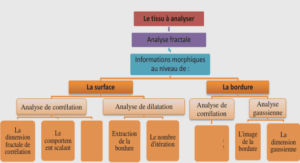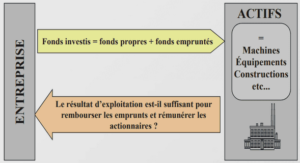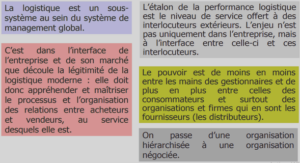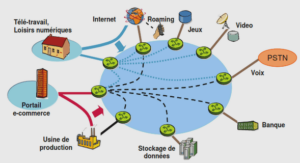Violence in Aboriginal communities
Some youth are more likely than others to be exposed to these stressful life events. One example is Aboriginal adolescents, of whom a large proportion live in a cultural minority setting generally characterized by poverty, violence and social exclusion. Family violence is a major public health issue among Aboriginal communities. According to the data from the General Social Survey on Victimization conducted in 2009 in Canada (Brennan, 2011), rates of spousal violence (physical and sexual) against Aboriginal women are three times higher than the rates reported for non Aboriginal women. Compared with the general population, a higher proportion of Aboriginal children and adolescents are placed in foster homes following persistent neglect and abuse in the family (Blackstock, Trocmé, & Bennett, 2004). Aboriginal youth are also more likely to have a family member who is incarcerated, with Aboriginal people representing 18 to 25% of the prison population despite their representing only 3% of the Canadian population (Statistics Canada, 2010). High rates of family violence and crime in Aboriginal communities are amplified by several social factors, including an accumulation of historical traumas (e.g., residential schools, loss of cultural traditions), and the law of silence and corruption within the justice system, which results in a lack of social control and a climate of insecurity (Bopp, Bopp, & Lane, 2003).
Aboriginal youth’s resilience
These data suggest that Aboriginal adolescents have to adapt to an adverse environment that could seriously threaten their mental health. Nonetheless, some studies that focused on protective factors in Aboriginal communities, though few, suggest that a large proportion of adolescents (56 to 60% in some studies; Hopkins, Taylor, D’Antoine, & Zubrick, 2012; Lafromboise, Hoyt, Oliver, & Whitbeck, 2006) continue to thrive in the face of exposure to stressful life events and do not necessarily develop psychological problems in adulthood. This maintenance of positive adaptation despite a context of significant adversity refers to resilience (Luthar, Cicchetti, & Becker, 2000). Resilience research is fundamental in Aboriginal communities because it proposes a strengths-based approach that considers youth and their families in terms of capacities and resources rather than in terms of deficits and psychopathologies (Canavan, 2008). This approach promotes the well-being of marginalized populations not only by correcting an image of deficit but also by promoting the development of interventions that foster young people’s ability to bounce back despite the presence of major risk factors in their community (Muckle & Dion, 2008).
Notwithstanding the growing interest in resilience research and Aboriginal communities, published literature examining resilience factors in Aboriginal youth is limited. However, a few studies have identified factors associated with resilient functioning among Aboriginal youth. These protective factors included having a prosocial friend (i.e., who did not induce the participants, by either example or persuasion, to engage in risky behaviour; Andersson & Ledogar, 2008; Hopkins et al., 2012), parental care and support (Andersson & Ledogar, 2008; Filbert & Flynn, 2010; Lafromboise et al., 2006), relationships with prosocial adults (Filbert & Flynn, 2010), knowledge of Aboriginal culture and heritage (Filbert & Flynn, 2010; Hopkins et al., 2012; Lafromboise et al., 2006; Walls, 2007; Zahradnik et al., 2010), spirituality (Graham, 2001), perception of community support (Lafromboise et al., 2006), positive values and social competencies (Filbert & Flynn, 2010).
These studies contribute considerably to our understanding of the individual, relational and cultural factors involved in Aboriginal people’s resilience. However, these studies present important limitations that should be addressed in future research. For example, few attempts have been made to include culturally sensitive measures. In studies involving Aboriginal youth, most resilience measures were based on a dominant North American definition of resilience that does not consider the fact that the criteria for good adaptation may differ between Aboriginal people and their non-Aboriginal peers (for exceptions, see Walls, 2007; Zahradnik et al., 2010). Furthermore, many authors conceptualized resilience in terms of behavioral observations and academic success without assessing it in terms of psychological health (e.g., Lafromboise et al., 2006; Filbert & Flynn, 2010; Graham, 2001). Consequently, adolescents who are depressed and anxious because of regular exposure to family violence would be considered resilient and would not necessarily receive appropriate help, simply because they do well in school and do not exhibit externalizing behavior problems. Since being competent in one domain does not necessarily imply resilience, researchers must consider the multidimensional nature of resilience in their measures. Finally, methodological biases were also observed in some of the studies described above, including sampling bias (e.g., classification of participants among resilient and maladaptive groups based on a list of students whom the school principal considered resilient; Graham, 2001) and missing information on the psychometric properties of the measures (e.g., Andersson & Ledogar, 2008) .
Research to date has highlighted a range of relational, contextual and, to a lesser extent, individual resilience factors among Aboriginal adolescents. Moreover, few attempts have been made to determine the role of these three types of resilience factors in psychological distress among Aboriginal and non-Aboriginal adolescents. Finally, while many studies have focused on the psychological consequences of stressful life events in adolescence, less research has been conducted to compare the value of various stressful life events in predicting psychological distress among adolescents from different cultural backgrounds. This information could be particularly helpful in the development of culturally based interventions among adolescents exposed to various kinds of stressful events.
Given this context, the first aim of the present study was to explore the predictive value of various vulnerability factors, which include traumas related to family violence and other stressful life events, in psychological distress among adolescents from different cultural backgrounds. Since this study focuses on resilience, the second objective was to assess the impact of currently reported resilience on current psychological functioning, after having assessed the effects of these vulnerability factors.
Psychological distress. Psychological distress symptoms were measured using the French version (Wright & Sabourin, 1996) of the Trauma Symptom Checklist for Children (TSC-C; Brière, 1989). The TSC-C is a 54-item self-report measure designed to assess children and adolescent’s responses to trauma across a number of symptom areas. The TSC-C includes six clinical scales: 1) anxiety, 2) depression, 3) anger, 4) posttraumatic stress (PTS), 5) dissociation, and 6) sexual concerns. The TSC-C also includes two validity scales that evaluate both the minimization and the exaggeration of psychological symptoms. Answers are recorded on a 4-point Likert type scale ranging from 0 (never) to 3 (almost all the time). In the study by Thériault and her colleagues (2003), the French version of the TSC-C demonstrated good internal consistency (r = .69 to .89) and good test-retest reliability (r = .75 to .81 after two weeks). Internal consistency was similar (r = .74 to .83) in our sample.
Resilience. Resilience was measured using the validated 27 item French version (Daigneault, Dion, Hébert, McDuff, & Collin-Vézina, 2013) of the Child and Youth Resilience Measure (CYRM; Ungar & Liebenberg, 2005), which examines resilience among children and youth from various cultural backgrounds. The CYRM has been piloted with 1451 youth from 14 different communities (including a Canadian Aboriginal community) that participated actively in the development of the questionnaire. Answers are recorded on a 5-point Likert-type scale, ranging from 1 (not at all) to 5 (a lot), with a high score indicating a high level of resources. To test whether all types of resilience factors have the same effect on adolescents’ psychological distress, we examined the predictive value of three different resilience factors: 1) individual, 2) relational/familial and 3) community (which corresponds to the factors identified in Daigneault et al.). When validated in a sample of 589 Quebec adolescents (Daigneault et al.), the CYRM was found to be psychometrically sound, with good internal consistency (Cronbach’s alphas = .84, .78 and .64 for individual, relational/familial and contextual scales, respectively) and excellent test-retest reliability after two weeks (r = .73 to .84) and three months (r = .70 to .76). Internal consistency of the three CYRM components was similar in our sample (Cronbach’s alphas between .64 and .82).
Introduction |






